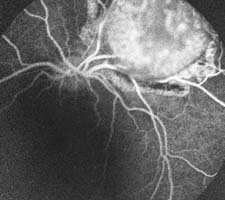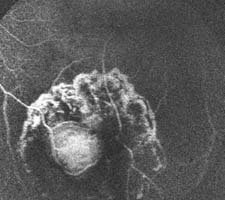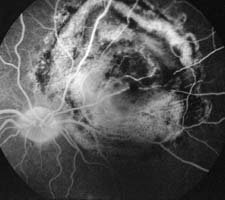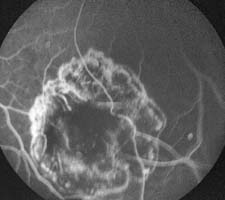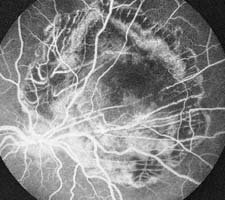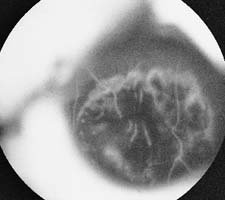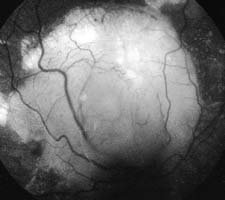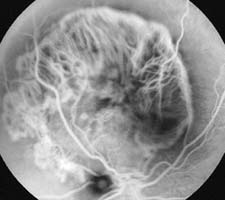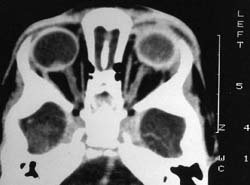Chemoreduction, aggressive local treatment improves prognosis of patients with retinoblastoma
Although retinoblastoma remains an extremely malignant tumor, enucleation can be avoided in most cases.
ROME — The use of systemic chemotherapy associated with aggressive sequential local treatments can safely treat retinoblastoma in children’s eyes, as long as vitreous or subretinal seeding is not present, according to a specialist here.
“In the past, treatment was based on enucleation or external beam radiotherapy, but in the last few years chemotherapy has achieved a major role in the primary management of the disease. Its function is that of reducing the size of the tumor (chemoreduction), thus permitting the use of local treatments on a smaller mass,” said Riccardo Maggi, MD, of Bambin Gesù Children’s Hospital.
In the past 15 years a total of 55 children with unilateral or bilateral retinoblastoma were treated at the Bambin Gesù Hospital by Pasquale Vadala, MD, head of the department of ophthalmology, and his staff: Michele Fortunato, MD, Paolo Capozzi, MD, and Carla Fabbri, MD.
“It’s only in the past 2 years that we have been able to apply chemoreduction as a routine treatment, and the number of cases where we cannot preserve vision has been greatly reduced,” Dr. Maggi said.
Enucleation, he said, is now limited to eyes with large tumors with extensive vitreous or subretinal seeding, secondary glaucoma, orbital extension or infiltration of the choroid and/or optic nerve. Also, external radiotherapy is avoided whenever possible.
“Although extensively used in the past, external radiotherapy has severe complications: cataract, malformation of the orbital bones and soft tissues and the development of radiation-induced secondary cancers. In association with chemotherapy, we still use it in Reese-Ellsworth group 4 and 5 large tumors with diffuse vitreous and subretinal seeds or those that have extended to the orbit or optic nerve,” he said.
Prompt diagnosis essential
Retinoblastoma is the most malignant intraocular tumor of childhood. Cases are generally referred to the pediatric ophthalmologist when the parents or the pediatrician note the onset of leukocoria or strabismus.
“Prompt diagnosis is essential, and it is based on indirect ophthalmoscopy, fluorescein and indocyanine green angiography and B-scan ultrasonography, particularly in the presence of unclear media,” Dr. Maggi said. “Systemic evaluation is also required. It encompasses bone marrow examination, cerebrospinal fluid cytology, total body computed tomography (CT) for the detection of metastases and magnetic resonance imaging (MRI) for the detection of optic nerve or orbital invasion.”
Differential diagnosis, in particular with Coats’ disease, persistent hyperplastic primary vitreous and retinopathy of prematurity, can be challenging, he added. Detailed history and thorough examination, particularly with MRI and CT, can help to exclude these conditions.
| ||||||||||||||||
Flexible use of treatments
A conservative approach to retinoblastoma requires the flexible use of the various treatment modalities, together with a constant evaluation of their effects, Dr. Maggi said.
Examinations under anesthesia should be performed at 2-to-4-week intervals, during which adjunctive treatment can be performed, if required.
“There are indications for each treatment modality, and they can be a useful guidance. However, we should bear in mind that the response is very individual and only experience and close observation of the patient can tell what’s the best option case by case,” he said.
The application of an episcleral radioactive plaque, or brachytherapy, is indicated after chemoreduction for selected, solitary retinoblastomas less than 16 mm in diameter, or with vitreous seeding performed with shielded plaques. This method prevents exposure of the entire eye and orbit to radiotherapy.
Cryotherapy is indicated for tumors up to 3.5 to 4 mm in diameter confined to the sensory retina, but do not present vitreous dissemination of tumor cells. It is performed with multiple triple freeze-thaw cycles through an opening of the conjunctiva.
Argon or diode laser photocoagulation applied with an indirect ophthalmoscope is effective for tumors up to 6 to 8 mm in diameter in the absence of optic nerve and choroidal invasion or vitreous seeding. Several rows of confluent burns are applied around the base of the mass to obtain a net whitening of the retina.
Transpupillary thermotherapy (TTT), either alone or after chemotherapy, consists of the application of heat at sub-photocoagulation energy levels with a continuous mode diode laser, inducing tumor necrosis. The effect of the treatment is shown by the resulting pale gray color of the tumor. Indications are medium-size tumors up to 12 mm in diameter situated behind the equator.
Dr. Maggi said that cryotherapy, photocoagulation and TTT frequently require multiple applications.
A 15-year case series
|
The case series presented by Dr. Maggi comprised 55 children (73 eyes) with retinoblastoma treated at the Bambin Gesù Hospital in the past 15 years. Of these, 37 cases were unilateral and 18 bilateral. Average age at diagnosis was 9 months for bilateral and 25 months for unilateral cases. Follow-up ranged from 1 month to 14 years.
“In this case series, the rate of enucleation is still high, because chemoreduction was systematically introduced only 2 years ago. Recent cases of enucleation were often due to late diagnosis,” he said.
He explained that enucleation was performed with a 10-mm optic nerve section, and orbital implants were routinely placed at the time of surgery.
“Cryotherapy was performed with triple freeze-thaw procedures, photocoagulation with the application of confluent burns around the base of the tumor and thermotherapy with direct treatment of the tumor with a diode laser indirect ophthalmoscope delivery system. Follow-up examinations were performed under anesthesia. Efficacy of previous treatments was evaluated and successive treatments were performed when needed. Chemotherapy and radiotherapy were administered by pediatric oncologists and radiologists of our hospital,” Dr. Maggi said.
Hopes for the future
The endpoint of treatment was considered to be the appearance of a flat pigmented scar (type 4 regression) or when the tumor became diffusely calcified (type 1 regression).
“In our experience, these results required from a few weeks to several months, during which examinations under anesthesia and further treatments (when needed) were performed,” he said.
Relapse was observed in four patients with bilateral retinoblastoma. The following salvage treatments were performed: external beam radiotherapy and cryotreatment; chemotherapy (two cycles) and laser (two); laser (one); and enucleation of the surviving eye.
“Two patients, referred to us after the appearance of metastases, died although enucleation and a salvage treatment with chemotherapy and radiotherapy were attempted,” Dr. Maggi said.
Retinoblastoma, he concluded, remains an extremely malignant tumor, but the new treatment options can improve the prognosis and the quality of life of these patients.
The treatment regimens used can be seen in the accompanying chart below.
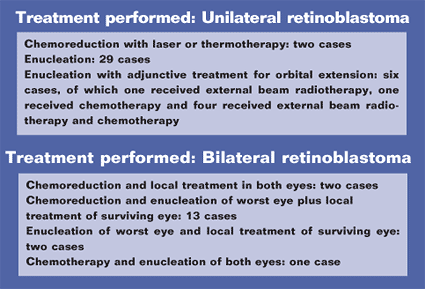
For Your Information:
- Riccardo Maggi, MD, can be reached at Bambin Gesù Children’s Hospital, Via Latina 8, 00179, Rome, Italy; phone/fax: (39) 06-704-517-32.

